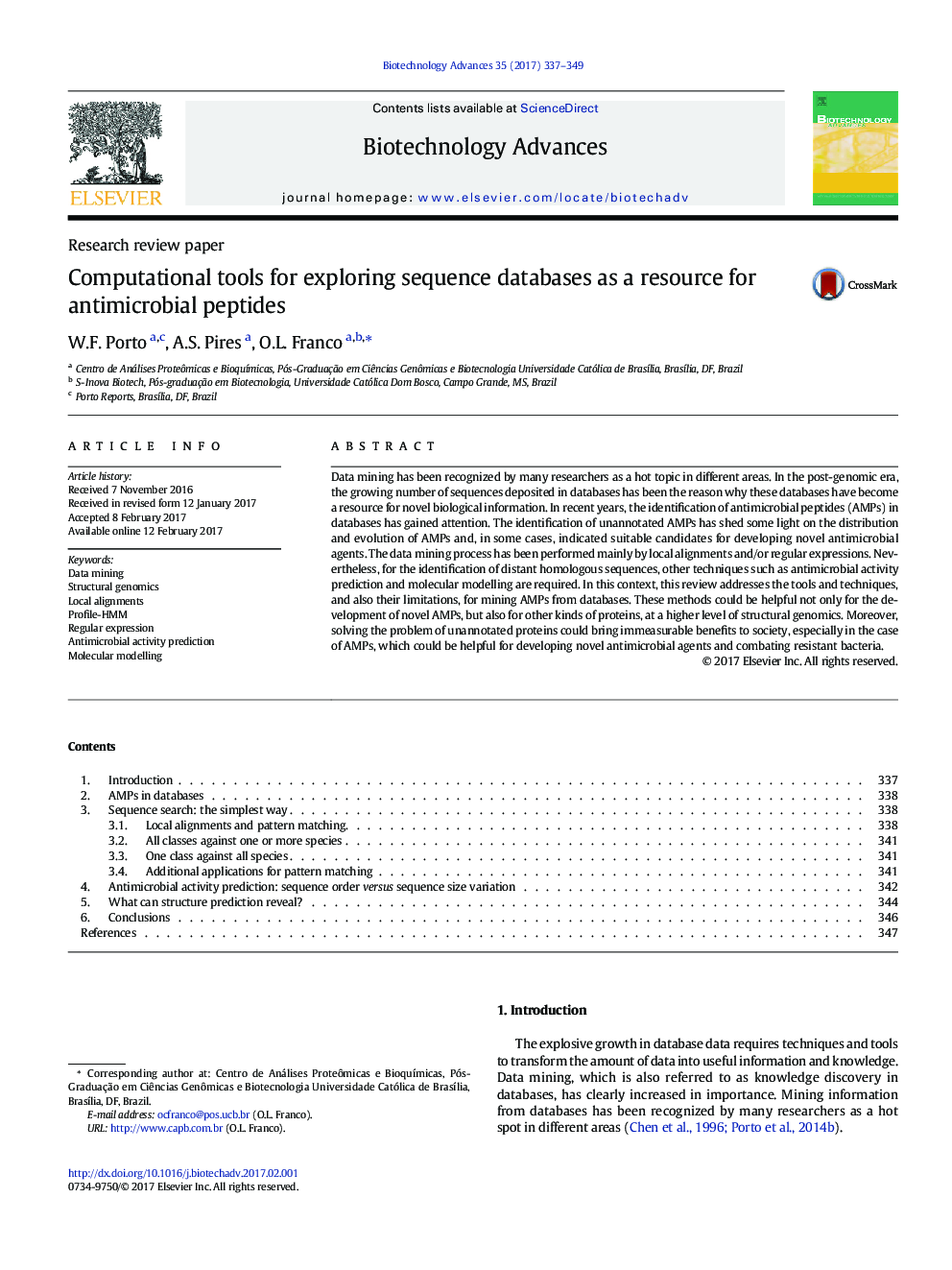| Article ID | Journal | Published Year | Pages | File Type |
|---|---|---|---|---|
| 4752531 | Biotechnology Advances | 2017 | 13 Pages |
â¢This review brings the state-of-the-art methods to identify AMPs in databases.â¢Approaches for antimicrobial activity and structure prediction are described.â¢The limitations of each method are discussed along prospects for future works.
Data mining has been recognized by many researchers as a hot topic in different areas. In the post-genomic era, the growing number of sequences deposited in databases has been the reason why these databases have become a resource for novel biological information. In recent years, the identification of antimicrobial peptides (AMPs) in databases has gained attention. The identification of unannotated AMPs has shed some light on the distribution and evolution of AMPs and, in some cases, indicated suitable candidates for developing novel antimicrobial agents. The data mining process has been performed mainly by local alignments and/or regular expressions. Nevertheless, for the identification of distant homologous sequences, other techniques such as antimicrobial activity prediction and molecular modelling are required. In this context, this review addresses the tools and techniques, and also their limitations, for mining AMPs from databases. These methods could be helpful not only for the development of novel AMPs, but also for other kinds of proteins, at a higher level of structural genomics. Moreover, solving the problem of unannotated proteins could bring immeasurable benefits to society, especially in the case of AMPs, which could be helpful for developing novel antimicrobial agents and combating resistant bacteria.
